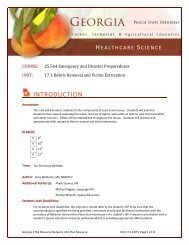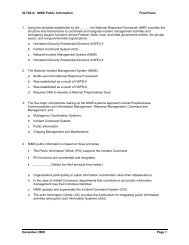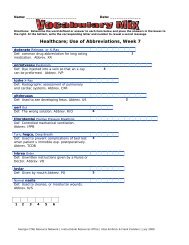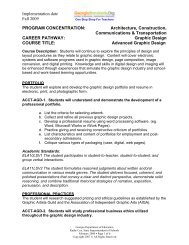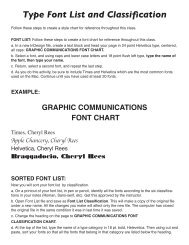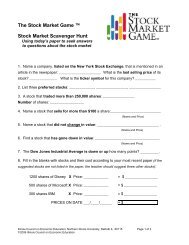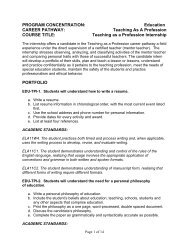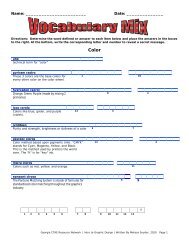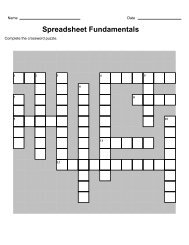emt-basic curriculum module 4
emt-basic curriculum module 4
emt-basic curriculum module 4
Create successful ePaper yourself
Turn your PDF publications into a flip-book with our unique Google optimized e-Paper software.
State of WisconsinEMT-Basic: A Practice BasedApproach to EMS EducationVIII. Contraindications - situations in which a drug should not be used because itmay cause harm to the patient or offer no effect in improving the patient'scondition or illnessIX. Medication FormA. Types:1. Compressed powders or tablets - nitroglycerin2. Liquids for injection – epinephrine and glucagon3. Gels – glucose4. Suspensions - activated charcoal5. Fine powder for inhalation – metered-dose inhaler6. Gases - oxygen7. Sublingual spray - nitroglycerin8. Liquid/vaporized nebulizers – alubterol and AtroventB. Each drug is in a specific medication form to allow properly controlledconcentrations of the drug to enter into the blood stream where it hasan effect on the target body systemX. Dose - state how much of the drug should be givenXI. Routes of Administration - state route by which the medication is administeredasA. Oral – swallowedB. Sublingual - absorbed through mucous membranesC. Intramuscular injection - injected into muscleD. Subcutaneous injection - injected into subcutaneous tissueE. Intravenous - administered into veins (not an EMT B skill)F. Endotrachial - administered into an ET tube (not an EMT B skill)XII. Side EffectsA. Actions of a drug other than those desiredB. Some side effects may be predictableC. Intolerance - the severity of side effects may outweigh expectedbenefits of the medicationD. Allergy1. Can occur with medication administration if patient ishypersensitive to that medication2. If severe, may cause swelling of airway tissues3. Be alert for signs and symptoms of severe allergic reaction (seesection on Severe Allergic Reactions)4. Identify preexisting allergies during patient history to avoidpotentially adverse or fatal response to medicationsE. Involve medical control in medication administration1. Adequate consideration of indications and contraindications2. Adequate consideration of potential medication interaction3. Possible adjustment of usual dose based on age, weight andrelative contraindicationsXIII. The “6 Rs” of medication administrationA. Right patientB. Right drugModule 4-5



